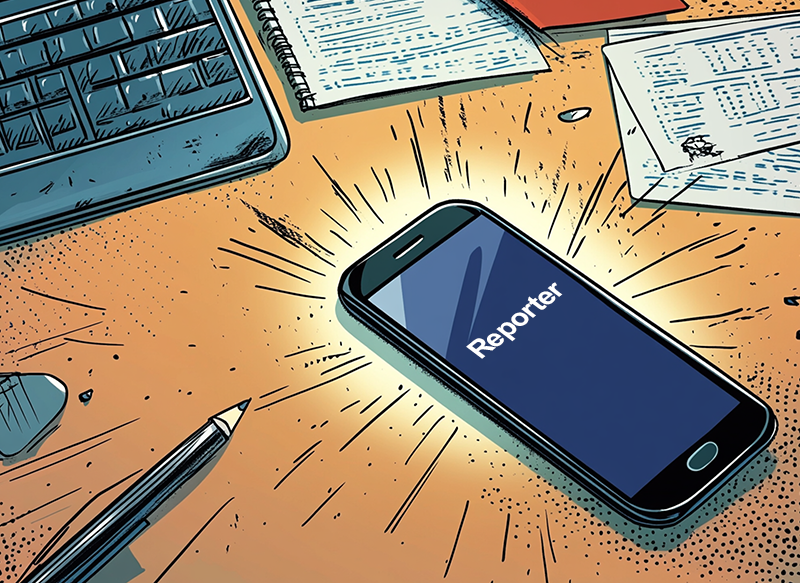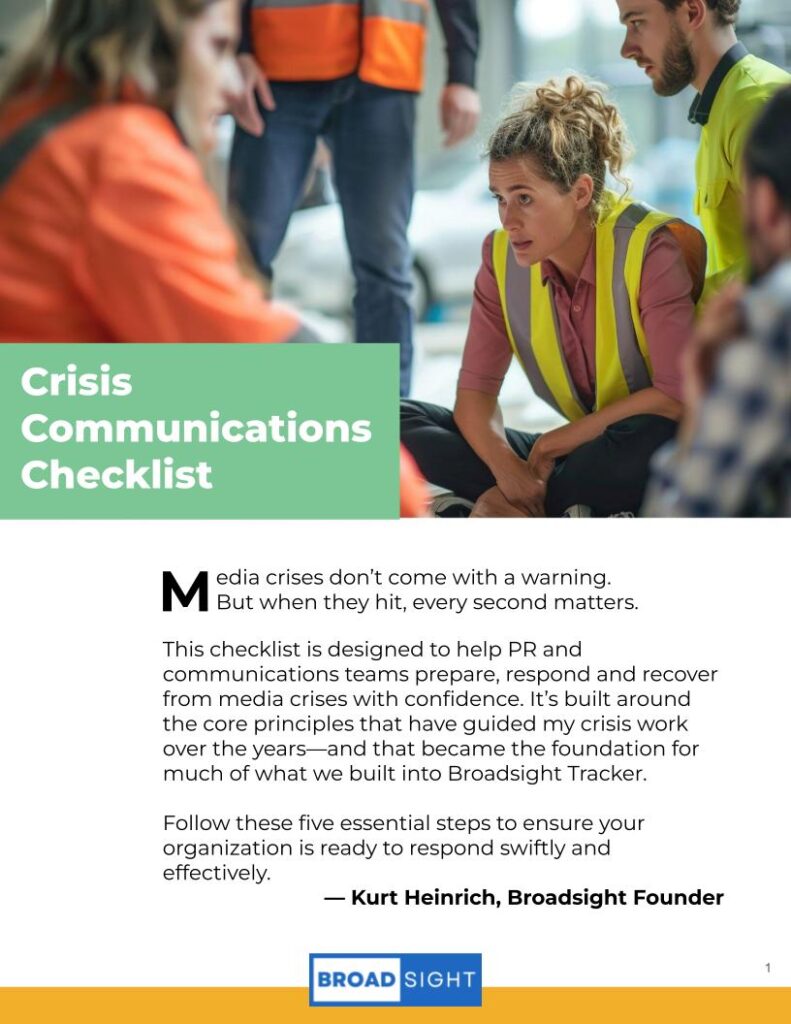When Seconds Count: How I Keep Control in a Media Crisis

I remember the moment vividly: The phone buzzed on my desk with an urgency I recognized all too well. A reporter had caught wind of an unfolding situation at the organization I worked for, and they were looking for a statement—immediately. The news was spreading fast. Social media posts were being shared by the second. If we didn’t respond quickly and accurately, the narrative would take on a life of its own.

Over the years, I’ve come to appreciate one undeniable truth in crisis communications: When a crisis hits, every second counts. The organizations that protect their reputations in these moments aren’t just lucky—they’re prepared. And while experience, instincts, and calm under pressure all play a role, the real differentiator is how well a team is set up to respond before the crisis ever begins.
The Crisis That Shaped My Approach
Early in my career, I worked on a crisis that turned into a masterclass in what not to do. The organization I was with at the time was blindsided by a sensitive issue that had gone public. What followed was a scramble. Every team member was working hard—emailing updates, calling stakeholders, drafting statements—but no one had a clear picture of who was saying what, which media outlets had been contacted or what the agreed-upon key messages were.
The result? Confusion. Mixed messages went out. One executive told a reporter something that contradicted the official line we were working from. Journalists grew skeptical of the organization’s credibility, and trust took a significant hit. We contained the damage eventually, but the recovery took months.
That experience taught me a crucial lesson: In a crisis, disorganization isn’t just inefficient; it’s reputationally dangerous.
The Importance of Acting Quickly—But Not Carelessly
Speed in a media crisis is non-negotiable. The news cycle moves faster than ever, and social media can magnify a single comment or event exponentially. But there’s a common misconception that speed means rushing. In reality, it’s about having the right systems in place so that responding quickly doesn’t mean responding carelessly.
When a story breaks, your team needs immediate access to critical information:
- Who has already been contacted?
- What messaging has been shared publicly?
- What’s the official line the team needs to stick to?
- Which stakeholders need to be prioritized?
Without a central, accessible record of this information, you’ll lose precious time hunting for answers—time you simply don’t have.
I’ve seen teams make avoidable mistakes under pressure: calling the same journalist twice, releasing statements with inconsistent details, or worse, contradicting one another across platforms. The fallout isn’t just embarrassing; it erodes the public’s trust in your organization.
Consistency is Credibility
One of the most overlooked aspects of crisis communication is consistency. If your messaging varies depending on who is speaking or where it’s being published, your audience will question your credibility. Imagine two spokespersons from the same organization offering slightly different accounts of an incident. Even if the difference is minor, it plants seeds of doubt.
To avoid this, organizations need:
- Pre-approved message templates: For common scenarios like data breaches, employee misconduct or operational disruptions.
- A single source of truth: A centralized platform where all messaging and interactions are logged.
- Real-time updates: The ability for team members to access the latest approved messaging, anytime, anywhere.
In one case I worked on, we set up a simple spreadsheet as our “message centre.” It worked—until it didn’t. As the situation evolved, the document became cluttered, team members forgot to update it, and it was difficult to track changes. It was clear we needed something more robust.
The Mental Load of Crisis Management
What people don’t often talk about in crisis communications is the emotional and cognitive load it places on a team. In the heat of a crisis, you’re not just dealing with media inquiries—you’re managing internal expectations, calming anxious executives and constantly recalibrating your response based on new information.
Crisis communications professionals are human. We make better decisions when we’re not juggling a dozen tasks manually. Automating routine but essential processes—like tracking media interactions or compiling response reports—frees up mental bandwidth for the strategic work that truly matters.
The Spreadsheet Era—and the Moment of Realization
After years of handling crises across multiple organizations, I found myself defaulting to the same routine: opening spreadsheets to log media inquiries, copying and pasting email threads, and manually updating lists of who said what to whom. The spreadsheets were useful but they were also fragile. People forgot to update them, made accidental edits or simply couldn’t access the latest version when they needed it most.
I remember one particular incident where a journalist was mistakenly told two different versions of the same story by two different team members. The journalist wasn’t malicious; they were just doing their job. But that discrepancy became part of the story. We spent weeks trying to re-establish the organization’s credibility after that.
That was the moment it really clicked: Our process was fundamentally flawed. We were trying to manage 21st-century crises with 20th-century tools. And it wasn’t just us. When I talked to peers in the industry, they all told me the same thing: They were also juggling spreadsheets, emails, and sticky notes while trying to respond to journalists in real time.
The tools we had weren’t failing because we were using them incorrectly; they were failing because they weren’t designed for the complexity of the modern media landscape.
What We Needed to Do Differently
That realization led me to rethink what an effective crisis response system actually needed. Through trial and error—and more crises than I’d like to admit—I landed on a few core principles:
- Automate Manual Processes:
We were spending hours entering media requests into spreadsheets. The more we could automate that, the more time we had to craft thoughtful, accurate responses.
- Centralize All Communications:
It wasn’t enough to have the information; we needed it in one, accessible location. Whether it was a media inquiry from that morning or a key message from last year, everything had to live in the same place.
- Maintain a Clear Timeline of Events:
In a crisis, things move quickly. It’s easy to lose track of who said what to whom. Keeping a running, time-stamped record of interactions made it much simpler to track the evolution of a situation.
- Ensure Access to the Latest Messaging:
We built a library of pre-approved messages for common crisis scenarios. It was like having a toolkit ready to go when the alarm sounded.
- Give Everyone the Same Playbook:
Crisis communications isn’t a solo act. Everyone—from the executive team to front-line communicators—needs to be aligned. Shared dashboards, regular check-ins, and clear communication channels became essential.
Over time, these principles became the backbone of how we responded to crises. They also happened to be the foundation for pretty much everything I eventually built into Broadsight Tracker.
Lessons Learned: Preparation Over Panic
If there’s one lesson I hope others can learn from my experience, it’s this: Don’t wait until the storm hits to build your response infrastructure. Media crises are inevitable for most organizations. How you handle them defines your reputation long after the headlines fade.
So, what can you do today to prepare for the crisis you hope never comes?
- Identify Your Crisis Scenarios: List the types of crises most likely to impact your organization.
- Create Messaging Templates: Draft core messages now so you’re not scrambling later.
- Centralize Your Information: Whether it’s a spreadsheet, an internal tool or a platform like ours—just make sure everything is in one place.
- Run Regular Drills: Practice makes clarity. Simulate real scenarios to stress-test your process.
- Empower Your Team: Crisis response isn’t just the responsibility of one or two people. Equip your entire team with the skills and tools they need to respond effectively.
Today, I still get that familiar jolt when my phone buzzes unexpectedly. But now, I also feel something new: confidence. Confidence that my team isn’t scrambling through outdated spreadsheets. Confidence that we can respond quickly and with a unified voice. Confidence that, even when the stakes are high, we’re ready.
Because when seconds count, preparation isn’t optional—it’s everything.
Download our Crisis Communications Checklist
